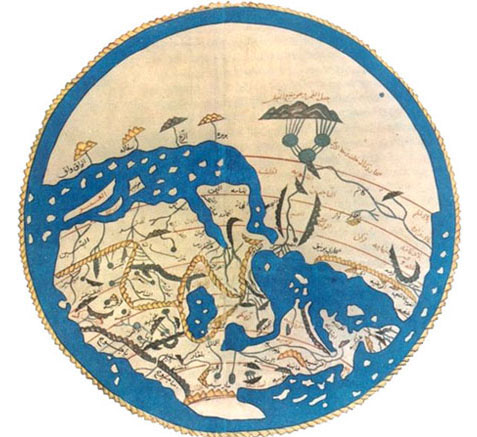Article of the Month - August 2022
““There is no harm in it”:
Muslim Participation in Levantine Christian Religious Festivals (750–1000),”
(Anna Chrysostomides: Theology and Religion, Oxford)
Anna Chrysostomides (2021) ““There is no harm in it”: Muslim Participation in Levantine Christian Religious Festivals (750–1000),”
Al-Masāq 33: 117—138.
Keywords: Christian-Muslim Relations • Medieval Religious Festivals • Job -- Biblical figure • Easter • Palm Sunday • Medieval Syria • Medieval Palestine • Medieval Levant
Publisher’s Abstract:
This article explores early Muslim participation in local and large Christian festivals through the lens of two discussions within a tenth-century legal responsa, the Ahl al-milal. The local festivals of Job at Dayr Ayyūb and the Epiphany at Tūr Tabūr, as well as the larger festivals of Palm Sunday, Holy Fire and Easter, provide evidence of shared attendance at festivals in the ʿAbbāsid period (750–1000). Islamic, and some Christian, legal, literary and geographical literature presents these events as Christian celebrations with shared narratives of venerated figures, which involved both practical and enjoyable aspects. Although the sharing of these celebrations was a common factor, there was a diversity in local practices. A trend developed amongst Muslim attendees to limit their participation to the market and activities outside the church building in some areas of the Levant, but not in Jerusalem. This seems to have occurred spontaneously in some areas and was not specifically due to a ruling by a jurist.
Nomination Statement:
In this article, Anna Chrysostomides explores Muslim perceptions of and participation in Christiaan religious festivals in the Levant during the Abbasid era (up to about 1000CE), a time when in this region Muslims constituted the social majority, whereas Christians constituted the numerical majority. Outside of Jerusalem – a site of religious competition and of the controversial miracle of the holy fire – Muslim jurists did not seem particularly concerned by the fact that Muslim were taking part in these occasions. This was an era in which conversion was common, muddying the line between Christian and Muslim families and communities – a division Islamic jurists had yet to clearly delineated, and which many ordinary believers paid little mind to in quotidien contexts. It was not unusual for Muslims to pray in churches, especially in the absence of local mosques; and we find that fatawa reveal participation in local Christian festivals was also common, particularly, but not necessarily those associated with common holy figures (such as Old Testament prophets) – festivals that were not merely religious, but also functioned as markets and occasions for general socialization and amusement. Other fatawa and legal treatises reveal that Muslims participated in emblematic festivals, such as Palm Sunday and East, whose exuberant and unrestrained observation alarmed even contemporary Christian clergy. It was not until later centuries, and until the Muslims displaced Christians as the numerical majority that jurists came to focus effectively on these occasions. Clearly written and lucidly argued with generous excerpts from primary sources, this article is not only a fine piece of research but an excellent resource to add to a seminar.
Authors’ Comment:
Muslims and Christians in the Middle East have participated in each other’s festivals from the advent of Islam to the present day. In the ʿAbbāsid period (750–1000) in the Levant, shared celebrations and sacred spaces are particularly prominent. The veneration of figures such as Abraham/Ibrāhīm, John the Baptist/Yaḥyā b. Zakariyyā, and the Virgin Mary/Maryam, amongst many other local saints, represent shared traditions between Christianity and Islam and can therefore contribute extensively to our understanding of Islam in this period. Significantly, understanding which practices were shared would also clarify what conversion to Islam from Christianity may have entailed in the early centuries of Muslim rule. Studies considering orthopraxical parallels between Christianity and Islam in the 8th-10th centuries have not been systematically compiled and analysed. While several authors, Richard Bulliet, Thomas Sizgorich, Jonathan Berkey, and others, have alluded to Muslim attendance of Christian festivals and vice versa throughout the medieval period in the Middle East, there has been little work exclusively addressing this subject despite a plethora of material in contemporary Christian and Muslim sources.
Would you like to discuss this article?
Start a thread on the Mediterranean Seminar list-server
See the other Articles of the Month here.
